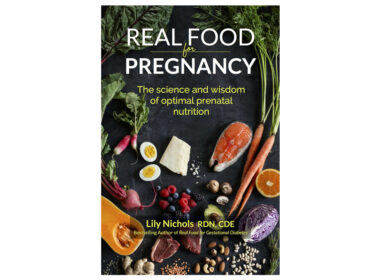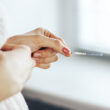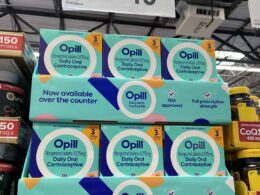If you recently stopped taking the pill and find that your digestive system is in disarray (or, if you’re like I was, and struggling with both PCOS and poor gut health), you’re not alone. As I shared in this article, a number of recent studies suggest that oral birth control may negatively impact gut health, decreasing microbial diversity and leading to intestinal permeability. Eventually, these imbalances in your microbiome can lead to symptoms like bloating, food sensitivities and cravings, nausea after eating, and even inflammatory bowel disease (IBD). In fact, a 2017 meta-analysis suggested that those exposed to oral birth control had a 30 percent increased risk for developing an inflammatory bowel disease like Crohn’s disease or ulcerative colitis.
Learning all this can be overwhelming when you’re already feeling unwell. The good news, though, is that these unpleasant symptoms can often be reversed by using natural remedies and forming new habits. Below, you’ll find five strategies based on the latest scientific research to intentionally heal your gut after being on birth control.
Tip #1: Replenish key nutrients for gut health that were depleted by birth control
Studies dating back to the late 1960s have shown that the birth control pill depletes key B vitamins (B2, B6, B12, and folate), along with vitamins C and E and the minerals magnesium, selenium, and zinc. Although it’s unclear how these depletions occur, it’s been suggested that the pill causes either malabsorption or increased excretion of these nutrients. Since a number of these nutrients are important in gut function and detoxification, it’s important to get your levels back up to normal. Zinc enhances the gut lining, for example, while selenium has been shown to improve gut microbial diversity.
To replenish your nutrient stores, look for a high quality prenatal or multivitamin from a reputable source. It’s a good idea to choose brands that are third-party tested, such as Pure Encapsulations or Thorne. When looking for a prenatal containing folate, consider brands like Designs for Health that use the bioavailable form of folate, L-methylfolate. Many brands opt for cheaper, synthetic folic acid, but studies have shown that 40 – 60% of the population has a genetic mutation that inhibits the conversion of folic acid to its active form. You may also wish to have your doctor run bloodwork, which can help determine if you should supplement your multivitamin with a higher daily dose of any particular vitamin.
Tip #2: Incorporate probiotic and prebiotic foods into your diet
Moving forward, you’ll want to focus on eating foods that will support your microbiome in the long-term. This advice isn’t limited to those coming off the pill. Many of us would do well to incorporate prebiotic and probiotic foods into our diet, as these foods work together to promote a healthy gut.
Because probiotic foods have been fermented by good bacteria, eating them introduces these beneficial bugs into your gut lining. Some common (and delicious) fermented foods include yogurt, raw sauerkraut, kimchi and other pickled vegetables, kefir, and kombucha. Just be sure to select a yogurt, kefir, or kombucha brand that is low in sugar, as eating too much sugar promotes inflammation and alters our microbiome. One word of caution, though, is that if you have SIBO (small intestinal bacterial overgrowth), which has been associated with using oral birth control, it’s recommended that you avoid fermented foods until the infection has healed.
Prebiotic foods, on the other hand, contain fiber and resistant starch that “feed” your good gut bugs to maintain the health of your microbiome. Resistant starch is a complex carbohydrate that ferments in your large intestine, feeding good gut bacteria in the process. Try incorporating sweet potatoes and yams into your diet or making tortillas and pancakes out of plantains and green bananas. There is even a gluten-free flour made from green bananas that is becoming increasingly popular! Since these foods are high in carbs, just be sure to round out your plate with plenty of non-starchy vegetables to help balance your blood sugar.
Tip #3: Support your birth control detox through diet
Dr. Jolene Brighten, a functional medicine physician and pioneer in treating post-birth control syndrome, emphasizes in her popular book Beyond the Pill that those coming off the pill should focus on foods that assist natural detoxification pathways. These foods should support the liver in processing the excess synthetic estrogen that forms a key component of the pill.
Dr. Brighten recommends eating a minimum of 25 grams of fiber a day from 3 to 6 cups of organic vegetables, especially leafy greens and cruciferous vegetables. If this constitutes a huge change in your diet, though, you’ll want to build up your fiber consumption slowly so that you don’t encourage further digestive distress. She also stresses the importance of finding a high-quality protein source. In practice, this means eating the best meat and eggs that fit your grocery budget. Ideally, you’ll be focusing on grass-fed, organic meats and pasture-raised eggs, but don’t let “perfect” be the enemy of the good.
In addition to eating the right foods, supplementing with a probiotic pill can help balance your gut bacteria. This daily, concentrated dose will help re-introduce the “good gut bugs” that have been crowded out by the bad. Dr. Brighten suggests that the organisms that have proved most helpful for her post-birth control patients are “high-dose, high-strain Lactobacillus and Bifidobacterium species, Saccharomyces boulardii, and spore-forming probiotics” (126). What constitutes a high dose? Dr. Hyman at the Cleveland Clinic Center for Functional Medicine recommends seeking out a probiotic with at least 25 – 50 billion living CFUs (colony-forming unity).
Tip #5: Avoid inflammatory foods
Knowing which foods to avoid is just as important as knowing which foods to incorporate. Many experts recommend avoiding the top inflammatory foods for 30 days to give your gut time to heal. Then, you can reintroduce them one at a time to determine if they give you a reaction. I have personal experience with the Autoimmune Protocol (AIP), which eliminates all potentially inflammatory foods for 30 days, and it had a powerful effect on my own gut health. Many women have also had great success with the Whole30, which focuses on “whole foods” rather than processed foods. The big three offenders are gluten, dairy, and refined sugar, but both of these food protocols also recommend avoiding grains, soy, caffeine, alcohol, and inflammatory fats from vegetable and seed oils like canola and safflower.
If you’d like to dive deeper into current research on post-birth control syndrome, I wholeheartedly recommend reading Dr. Brighten’s Beyond the Pill in full. It’s chock full of information and is written in an accessible, conversational style. As Dr. Brighten reminds us, healing your gut is the first step toward reclaiming your health after being on the pill. And, when you’re ready, learning to chart your cycle with a fertility awareness method (FAM) is another excellent way to truly take charge of your reproductive health.
Additional Reading:
Don’t Expect a Quick Fix When You Quit Birth Control (And Why It’s Still Worth the Effort)
The Startling Ways that Birth Control May Impact Gut Health and lead to IBD
The Surprising Connections Between PCOS, Dysbiosis, and Gut Health
The Crohn’s-Birth Control Connection: More Gut-Wrenching News About Contraceptives
How a Fertility Awareness Method Led Me to the Autoimmune Protocol
How an Anti-inflammatory Diet Can Help Balance Hormones
Insulin Resistance, PCOS, and Fertility Health: Are you at risk?











